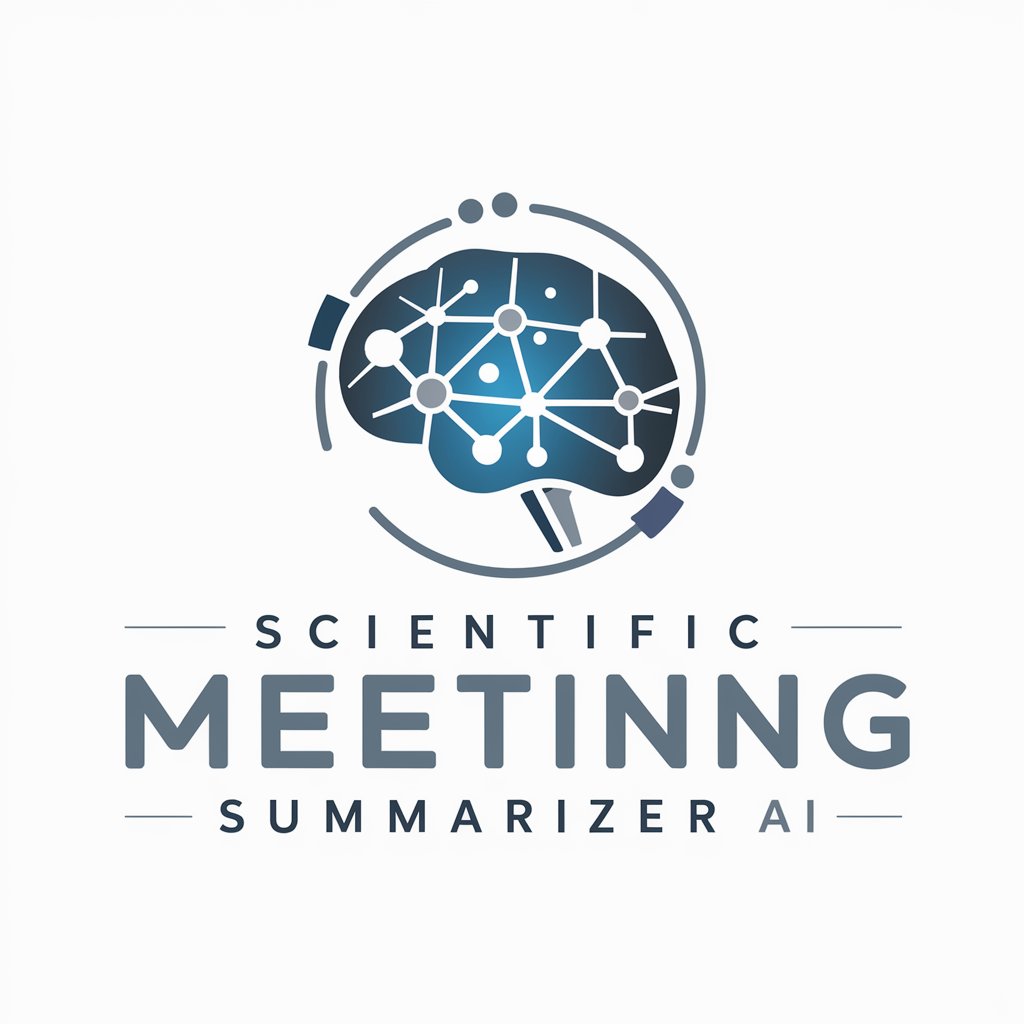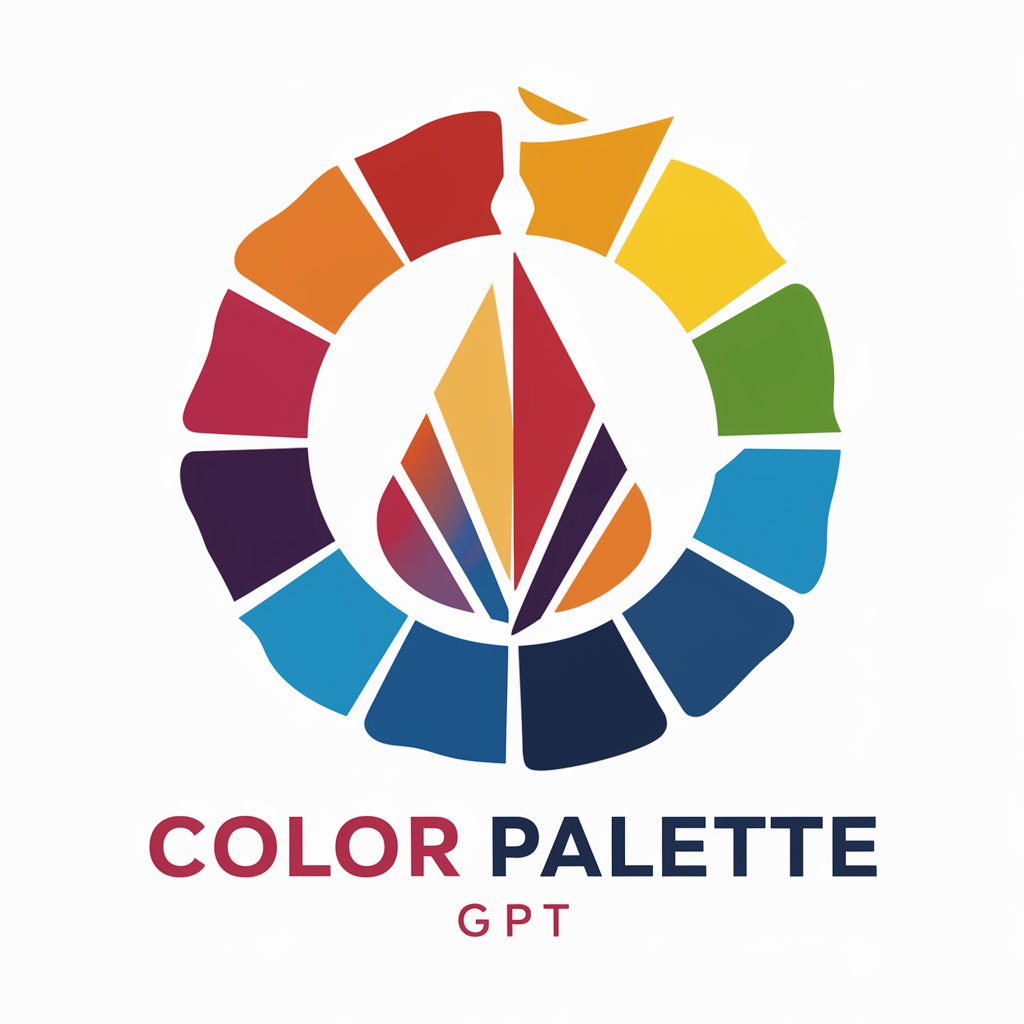Scientific Meeting Summarizer - Scientific Meeting Insights

Welcome to the Scientific Meeting Summarizer.
AI-powered Summaries for Scientific Insights
Summarize the key objectives of the recent scientific meeting on...
Detail the primary challenges discussed in the session about...
Highlight the main strategies proposed to address...
Provide a concise summary of the preliminary findings presented on...
Get Embed Code
Introduction to Scientific Meeting Summarizer
The Scientific Meeting Summarizer is designed to distill complex discussions, data, and outcomes from scientific meetings into concise, comprehensible summaries. Its core purpose is to facilitate the understanding and dissemination of scientific knowledge generated during meetings, conferences, and symposia. By extracting key points such as objectives, challenges, strategies, and preliminary findings, it ensures that valuable insights are accessible to a broader audience. For example, in summarizing the 2023 NIMHD Structural Racism and Discrimination (SRD) Grantee Meeting, it highlighted the main objectives, discussed methodological challenges, and synthesized emerging findings, thus providing a comprehensive overview of the meeting's outcomes and facilitating further collaboration and research in the field. Powered by ChatGPT-4o。

Main Functions of Scientific Meeting Summarizer
Summarization of Objectives and Key Discussions
Example
During the 2023 NIMHD SRD Grantee Meeting, the summarizer captured the event's objectives like fostering collaboration among principal investigators and sharing preliminary findings. It emphasized the importance of discussing research challenges and strategies, enabling stakeholders to grasp the meeting's core missions effectively.
Scenario
This function is particularly useful in settings where participants or interested parties are unable to attend the meeting. It provides them with a clear understanding of the event's focus and the critical discussions that took place.
Highlighting Challenges and Strategies
Example
The summarizer detailed challenges faced by researchers, such as data availability and partnership building, and the strategies employed to overcome these obstacles. For instance, it described how Dr. O’Shea navigated data limitations by utilizing existing datasets, offering insights into practical solutions for common research hurdles.
Scenario
This function aids in knowledge transfer, allowing researchers facing similar challenges to learn from the experiences and solutions of their peers. It promotes a collaborative approach to problem-solving within the scientific community.
Reporting Preliminary or Emerging Findings
Example
By summarizing preliminary findings from various studies presented at the meeting, the summarizer makes early results accessible to a wider audience. For example, it highlighted Dr. McAdams DeMarco's findings on the impact of residential segregation on kidney transplant outcomes, drawing attention to significant research insights.
Scenario
This is crucial for stakeholders looking to stay updated on the latest research developments. It enables them to incorporate new knowledge into their ongoing projects or to spark new research initiatives based on these early findings.
Ideal Users of Scientific Meeting Summarizer Services
Researchers and Academics
Individuals actively involved in scientific research who may not have the time to attend every relevant meeting or sift through extensive meeting materials. They benefit from concise summaries that highlight essential discussions, findings, and methodological approaches relevant to their fields of study.
Policy Makers and Health Advocates
Professionals in policy-making or advocacy who need to understand the implications of scientific findings on public health and policy. Summaries provide them with a digestible format of complex scientific discussions, enabling them to make informed decisions and advocate for evidence-based policies.
Educational Institutions and Students
Educators and students can leverage summaries to incorporate the latest scientific discussions into their curriculum or research projects. This facilitates up-to-date learning and encourages engagement with current challenges and solutions in their fields of interest.
Non-Profit Organizations and Community Groups
These groups often collaborate on community-based research or advocacy projects and require an understanding of scientific research outcomes. Summaries help them grasp relevant findings and strategies that can be applied to their initiatives, promoting community health and well-being.

How to Use Scientific Meeting Summarizer
1. Initiate Trial
Start by accessing a trial version on yeschat.ai, which requires no login or subscription to ChatGPT Plus, ensuring easy and immediate access.
2. Upload Documents
Upload your scientific meeting transcripts, notes, or any relevant documents directly into the platform for analysis.
3. Specify Requirements
Detail your specific needs, such as focus areas, key points to highlight, or any particular challenges faced during the meeting.
4. Analyze and Summarize
Allow the tool to process and analyze the uploaded materials, creating a concise, comprehensive summary that captures the essence of your scientific meeting.
5. Review and Utilize
Evaluate the generated summary, make any necessary adjustments, and then apply the insights to enhance your research, publications, or future meetings.
Try other advanced and practical GPTs
Mississippi
Explore Mississippi's Rich Tapestry with AI

Color Palette
Empowering Creativity with AI-Driven Colors

Quali ISO Expert
Empowering ISO 9001 Excellence with AI

WQAssistant
AI-Powered SEO and Content Optimization

Lion
Empowering Lion Conservation Through AI

Workplace Navigator
Navigate workplace dynamics with AI-powered insights

Cover letter wizard
Craft Your Personalized Application with AI

Search Coin Counselor
Empowering Rewards with AI

Artikel Meister
Empowering your words with AI

Social Media Content Strategist
Crafting Your Social Media Success Story

Google Ads Artisan
Craft Winning Ads with AI Power

SEO Blog Article
Empowering Your Words with AI

Scientific Meeting Summarizer FAQs
What types of documents can Scientific Meeting Summarizer process?
The tool is adept at handling a wide range of documents, including meeting transcripts, presentation slides, and research notes, provided they are related to scientific meetings.
How does the summarizer handle complex scientific terminology?
It utilizes advanced NLP techniques to accurately interpret and summarize complex scientific jargon, ensuring that the essence and accuracy of discussions are preserved.
Can the summarizer identify and emphasize key findings from a meeting?
Yes, it's designed to highlight key discussions, findings, and conclusions, drawing attention to the most critical aspects of the meeting.
Is it possible to customize the summary output?
Absolutely. Users can specify areas of interest or concern, allowing the tool to tailor its analysis and summary to meet specific needs.
How does this tool facilitate collaboration among researchers?
By providing clear, concise summaries of complex discussions, it enables researchers to share insights and findings more effectively, fostering collaboration and facilitating further research.
